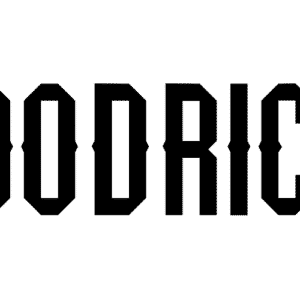Choosing the right parchment paper can make a significant difference in your cooking and baking experiences. With various types available, understanding their features will help you select the best option for your kitchen needs. This guide will cover the different types of parchment paper, their uses, and tips for making the right choice.
What is Parchment Paper?
Parchment paper is a heat-resistant, non-stick paper used primarily in baking. It is made from cellulose fibers, which are treated to create a smooth, non-stick surface. This paper is ideal for lining baking sheets, wrapping food, and even cooking en papillote (in paper).
Types of Parchment Paper
When it comes to parchment paper, there are several types to consider. Each type has unique features that cater to different cooking needs.
1. Unbleached Parchment Paper
Unbleached parchment paper is made from natural fibers and is free from chemical bleaching agents. This type is typically brown and is often preferred by those looking for a more environmentally friendly option. It can withstand temperatures up to 420°F (215°C) and is suitable for baking, roasting, and steaming.
2. Bleached Parchment Paper
Bleached parchment paper is white and has undergone a bleaching process to achieve its color. While it is equally effective for baking and cooking, some people prefer to avoid it due to potential chemical residues. Like its unbleached counterpart, it can handle temperatures up to 420°F (215°C).
3. Non-Stick Parchment Paper
Non-stick parchment paper is treated with a silicone coating that enhances its non-stick properties. This type is perfect for baking sticky items like cookies or caramel. It is usually available in both bleached and unbleached varieties and can withstand similar temperatures.
4. Pre-Cut Parchment Paper Sheets
For those who find cutting parchment paper to be a hassle, pre-cut sheets offer a convenient solution. These sheets come in various sizes, making them ideal for different baking pans. This option saves time and ensures that you have the right size for your needs.
5. Parchment Paper Rolls
Parchment paper rolls are versatile and can be cut to any size. This is particularly useful for larger baking sheets or when you need to line multiple pans. Rolls are available in both bleached and unbleached varieties and can be a more economical choice for frequent bakers.
Key Features to Consider
When shopping for parchment paper, several factors can influence your decision. Here are some essential features to consider:
1. Heat Resistance
One of the most critical aspects of parchment paper is its heat resistance. Most parchment papers can withstand temperatures up to 420°F (215°C), but it’s always best to check the packaging. If you plan to use it for high-temperature cooking, ensure you select a paper rated for those temperatures.
2. Non-Stick Coating
If you frequently bake cookies, pastries, or other sticky items, a non-stick parchment paper can be a game-changer. The silicone coating helps prevent food from sticking, making cleanup a breeze. Look for products specifically labeled as non-stick for the best results.
3. Food Safety
Ensure that the parchment paper you choose is food-safe. Most brands are certified safe for cooking and baking, but it’s always wise to double-check. Avoid using any paper not labeled for food use, as it may contain harmful chemicals.
4. Thickness
The thickness of parchment paper can affect its durability and heat resistance. Thicker papers are generally more robust and less likely to tear during use. If you plan to use the paper for heavy items or high-heat cooking, opt for a thicker option.
Common Uses for Parchment Paper
Understanding how to use parchment paper effectively can help you make the most of your kitchen tasks. Here are some common applications:
1. Lining Baking Sheets
One of the most popular uses for parchment paper is lining baking sheets. This prevents cookies and pastries from sticking and makes cleanup easier. Simply cut the paper to fit your baking sheet, and you’re ready to go.
2. Wrapping Food
Parchment paper is excellent for wrapping food before cooking. This method, known as en papillote, allows food to steam in its juices, enhancing flavor and moisture. Fish and vegetables are particularly suited for this technique.
3. Rolling Dough
When working with dough, parchment paper can prevent sticking and make rolling easier. Place the dough between two sheets of parchment to roll it out without adding extra flour.
4. Crafting and DIY Projects
Parchment paper isn’t just for cooking; it can also be used for various crafting projects. Its durability makes it suitable for stenciling, tracing, and even making homemade cards.
Tips for Choosing the Right Parchment Paper
Here are some practical tips to help you choose the right parchment paper for your kitchen needs:
1. Assess Your Cooking Style
Consider how often you bake or cook with parchment paper. If you frequently use it, investing in a high-quality option may be worth it. For occasional use, standard parchment paper should suffice.
2. Evaluate Your Recipes
Think about the types of recipes you typically prepare. If you often bake sticky items, a non-stick parchment paper is ideal. For general purposes, both bleached and unbleached varieties work well.
3. Check for Certifications
Look for parchment paper that is certified food-safe and free from harmful chemicals. Brands that prioritize safety will often display certifications on their packaging.
4. Read Reviews
Before making a purchase, check online reviews to see what other users have to say. This can provide insights into the paper’s performance and durability.
5. Experiment with Brands
Don’t hesitate to try different brands to find the one that works best for you. Each brand may have unique qualities, so experimentation can lead you to your perfect match.
Conclusion
Choosing the right parchment paper involves understanding your cooking needs and preferences. By considering the various types, features, and uses of parchment paper, you can make an informed decision that enhances your kitchen experience. Whether you’re baking cookies, roasting vegetables, or crafting, the right parchment paper can make all the difference.



